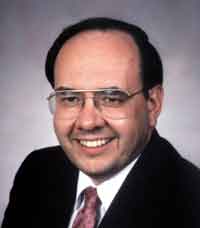This is an excerpt from an interesting article in Washington Post. To read the entire article, click here.
Freedom of photography: Police, security often clamp down despite public right
By Annys Shin
Washington Post Staff Writer
A few weeks ago, on his way to work, Matt Urick stopped to snap a few pictures of the U.S. Department of Housing and Urban Development's headquarters. He thought the building was ugly but might make for an interesting photo. The uniformed officer who ran up to him didn't agree. He told Urick he was not allowed to photograph federal buildings.
Urick wanted to tell the guard that there are pictures of the building on HUD's Web site, that every angle of the building is visible in street views on Google Maps and that he was merely an amateur photographer, not a threat. But Urick kept all this to himself.
(Examples of photos that got people in trouble with the police)
"A lot of these guys have guns and are enforcing laws they obviously don't understand, and they are not to be reasoned with," he said. After detaining Urick for a few minutes and conferring with a colleague on a radio, the officer let him go.
Courts have long ruled that the First Amendment protects the right of citizens to take photographs in public places. Even after the terrorist attacks of Sept. 11, 2001, law enforcement agencies have reiterated that right in official policies.
But in practice, those rules don't always filter down to police officers and security guards who continue to restrict photographers, often citing authority they don't have. Almost nine years after the terrorist attacks, which ratcheted up security at government properties and transportation hubs, anyone photographing federal buildings, bridges, trains or airports runs the risk of being seen as a potential terrorist.
(Can an entire downtown be declared a no-photo zone?)
Reliable statistics on detentions and arrests of photographers are hard to come by, but photographers, their advocates and even police agree that confrontations still occur frequently. Photographers had run-ins with police before the 2001 attacks, but constitutional lawyers say the combination of heightened security concerns and the spread of digital cameras has made such incidents more common.
In the past month, in addition to Urick's encounter, a retired oceanographer said he was threatened with arrest for snapping pictures of a federal courthouse in Silver Spring, and an Alexandria man was briefly detained for photographing police making a traffic stop in Georgetown.
(Traffic stop video sparks debate over police use of wiretap laws)
Law enforcement officials have a hard time explaining the gap between policy and practice. The disconnect, legal experts say, may stem from a dearth of guidelines about how to balance security concerns with civil liberties.
"Security guards are often given few rules to follow, but they have clearly gotten the message that they need to be extra vigilant," said Kent Willis, executive director of the American Civil Liberties Union of Virginia. "In the end, it seems you never know how a particular security guard is going to react."
Friday, July 30, 2010
Subscribe to:
Posts (Atom)
